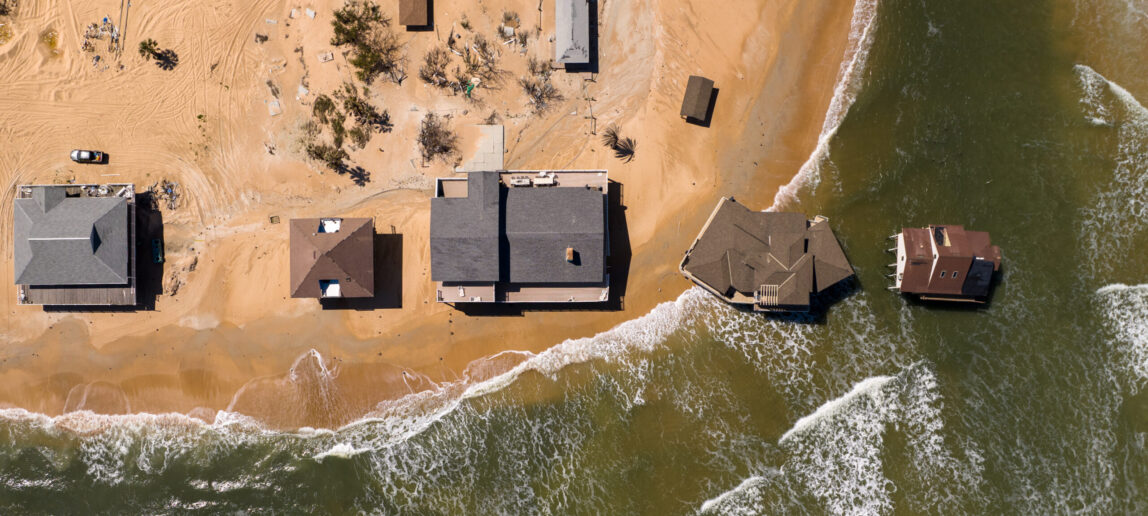Bridging the Divide: Building Resilient and Sustainable Communities in an Era of Extreme Weather
As hurricane season begins, the threat of extreme weather is top of mind for many communities. But for Dr. Manish K. Dixit, the challenge isn’t just preparing for the next storm; it’s building in a way that protects both people and the planet.
Dixit, an associate professor in the Department of Construction Science at Texas A&M University, is working to connect two major goals in building design: reducing carbon emissions and increasing resilience to natural disasters like hurricanes, floods, wildfires and tornadoes.
Dixit studies how buildings perform over time. His team evaluates both embodied carbon – the carbon cost of making, transporting and maintaining materials – and operational carbon, which includes the carbon footprint of heating, cooling and lighting over a building’s life span.
“We look at the life cycle of a building over 100 years,” he said. “That’s how you see the real impact.”
For example, adding more insulation can lower energy bills, but it requires more materials up front. The key, Dixit said, is finding the right balance, especially now that climate adaptation is just as important as emission reduction.
Living Labs in Action
To test real-world solutions, Dixit leads an international project with “living labs” in the United States, Indonesia and Colombia. These communities serve as testing grounds for building strategies that are sustainable, affordable and climate resilient.
In Indonesia, researchers examine strategies for coastal fishing villages. In Colombia, the team studies how land development affects forests, farming and food supply.
In Port Arthur and Beaumont, Texas, the project works with underserved neighborhoods vulnerable to flooding and storms. The team studies housing improvements that reduce carbon emissions while withstanding extreme weather.
One example is replacing carpet, which is easily damaged in floods, with ceramic tile or treated hardwood. These materials are more durable, less likely to be replaced and better for the environment over time.
The project also looks for bio-based materials, such as engineered wood or agricultural fiber, that are renewable and have a low or negative carbon footprint.
Technology That Builds Smarter
Dixit’s research also explores new tools for construction, including bio-based materials and cutting-edge building techniques. He said that one standout material is Hemcrete, a mixture of hemp fiber and lime. It’s carbon negative, insulates well and can be used for conventionally constructed or 3D-printed walls.
With tools like construction 3D printers and robots, crews can now build walls in just two to four days. Some robots even work around the clock, placing building blocks without breaks. This speeds up construction and cuts down on the need for manual labor.
Another fast and affordable option is prefabricated construction. Parts of a building, like wood-based modules, are made off-site and then put together quickly. Prefabricated components are better for the environment because they produce less waste, use fewer materials and often rely on renewable resources, like sustainably harvested wood.
Since the building parts are made in controlled factory settings, it’s easier to reduce energy use and recycle leftover materials. Plus, transporting finished pieces instead of raw materials can lower emissions from construction vehicles.
While helping build sustainably, technology also plays a major role in designing buildings that can withstand disasters. Building Information Modeling, or BIM, creates a digital database of a structure’s design, including material data, thermal performance, costs and structural details.
“BIM helps, but to connect that to robotic software, we use APIs,” Dixit said. APIs, application programming interfaces, link digital plans to construction equipment, according to Dixit. This technology can also simulate how buildings will hold up over decades of wind, heat, fire or water exposure.
Overcoming Policy and Affordability Barriers
The push for sustainable and resilient design is facing challenges, particularly around affordability and support from both insurance and government expectations.
“Insurance companies are a big hurdle,” Dixit said. “If we say, ‘Use this material because it is climate resilient,’ insurance companies have to accept that and add this resilience aspect into their calculator that calculates premiums.”
State and local governments can help reduce flash flooding with policies, like requiring surfaces that let water soak through. But some federal agencies, such as FEMA, advise residents to raise their homes on stilts or higher foundations, which can be too expensive for many people.
These upgrades can also cause new issues. For example, when only some homes are raised, the lower ones nearby might flood even more, leading to unequal risk.
Dixit’s team is developing flexible solutions tailored to different income and insurance levels. Public aid, private funding and financial support from churches or charities can help bridge the gap.
Working With Communities: A Resilient Path Forward
For Dixit, successful design isn’t just about technology; it’s about people.
“We’ll be co-designing, co-researching and co-implementing solutions with communities,” he said.
That means working directly with residents, local leaders and volunteers to ensure solutions are affordable, practical and culturally appropriate. It also builds trust, strengthens community ownership of the project and helps identify real needs that outsiders might overlook. By involving those most affected, the results are more likely to last and make a meaningful difference.
The work also requires help from experts in many fields, not just architects and engineers.
“We need not only the STEM disciplines but also psychology, behavioral science, social science – all those kinds of disciplines,” Dixit said.
As climate threats grow, so does the urgency to act. But Dixit said he believes progress is possible if design, materials, technology and policy can all work together.
His team’s research shows a path forward: building communities that are strong enough to survive disasters and smart enough to protect the planet.
“Building resilience doesn’t have to mean more carbon,” he said. “It just means we have to think smarter.”


